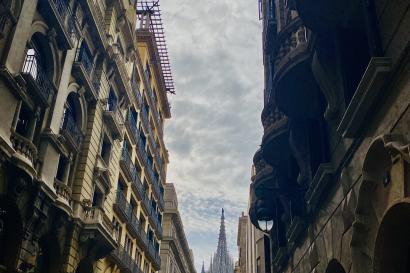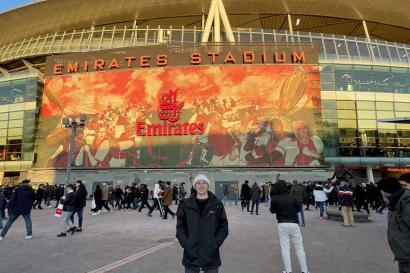
My second and third days in New Zealand were spent at Piritahi Marae on the beautiful Waiheke Island. Staying on the marae was a very welcoming experiencing for me. Before visiting, I didn’t know a lot about maraes or their significance in Māori culture. This post will explain a little bit of what I’ve learned, and what to expect if you ever visit a marae.
The marae is a part of Māori culture that has survived colonization by Europeans. It’s a place where Māori people can feel free to practice their culture the way their ancestors did. The marae complex usually consists of three things: first, the marae itself. This is a sacred courtyard, usually a grassy area with benches, in front of the meeting house. This is the first place that a visitor will enter in the marae complex. Then there’s the meeting house, which is the central building. It’s usually filled with beautiful carvings of important ancestors of the tribe. There’s no food or drink allowed in the meeting house, and you have to take your shoes off to enter. Finally, there’s the dining house, where meals are served once the visitors are welcomed.
Before entering a marae, all visitors must undergo a welcoming ceremony, known as a pōwhiri (pronounced po-fee-ree). We started by standing outside of the wooden arches that lead to the marae. The ceremony started when a local Māori woman started singing. Then we could walk into the marae. Women walked in front and men walked behind, but when we sat on the benches the women sat behind the men. There were three local people sitting on the bench opposite us. One of them got up and told us the history of his tribe, then a representative of our group stood up and explained who we were and why we were visiting. Then, we sang a song in the Māori language. To finish off the pōwhiri, we all did the hongi. The hongi is a traditional greeting where two people press their foreheads and noses together. It’s a very intimate greeting, and can seem a little strange at first, but it made us all feel very welcome. Once we had gone through the ceremony, we had lunch in the dining house.
We slept in the meeting house for the next two nights. We set up mattresses along the walls of the meeting house and slept in sleeping bags. It was a great way for everyone to get to know each other as well as experience Māori culture in a very welcoming atmosphere.

Jessica Robyns
<p style="margin-bottom:12.0pt">Kia ora! My name is Jessica and I'm majoring in biology and environmental studies at Lawrence University, a small school in Appleton, WI. I grew up in Marquette, Michigan and will always call the shore of Lake Superior home. I love to travel and have been to Costa Rica, Chile, and Argentina so far.<span style="text-autospace:none"><span style="font-size:16.0pt"><span style="font-family:"Times",serif"> </span></span></span></p>








